PERSONAL INTRODUCION
My name is Szabolcs Nagy (pronounced as Sabolch) hungarian astrophotographer currently living in London.
(for more about imaging ISS with a planetary camera and telescope please scroll down)
I’ve always been interested in science and space to a certain level, but here in the UK there is science and astronomy everywhere and it simply got me hooked. I do remember watching “Stargazing Live” presented by prof. Brian Cox and Dara O’Brien and that was probably a watershed moment. They were broadcasting a live view from a planetary camera inserted into a telescope pointed at Jupiter. Even on the live view one could easily make out the cloud belts on Jupiter, mostly shimmering but occasionally steady for a second or two. That was the point when I have decided to start saving some money and to get myself a telescope. I wanted to observe Jupiter with my own eyes, it somehow felt so majestic.
I will never forget the day when I collected my first telescope, namely a Skywatcher 200/1000 PDS newtonian reflector and an EQ5 Goto mount at Widescreen Centre. Honestly I was the happiest person on the whole globe! These are my very first shots of the equipment, Jupiter, Moon, Saturn and my very first shot of the ISS. It definitely looks like a skiing rabbit, isn’
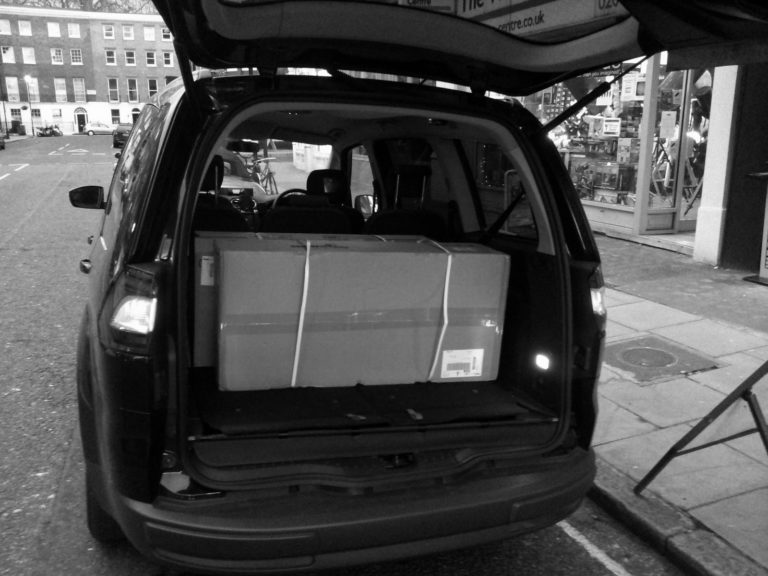
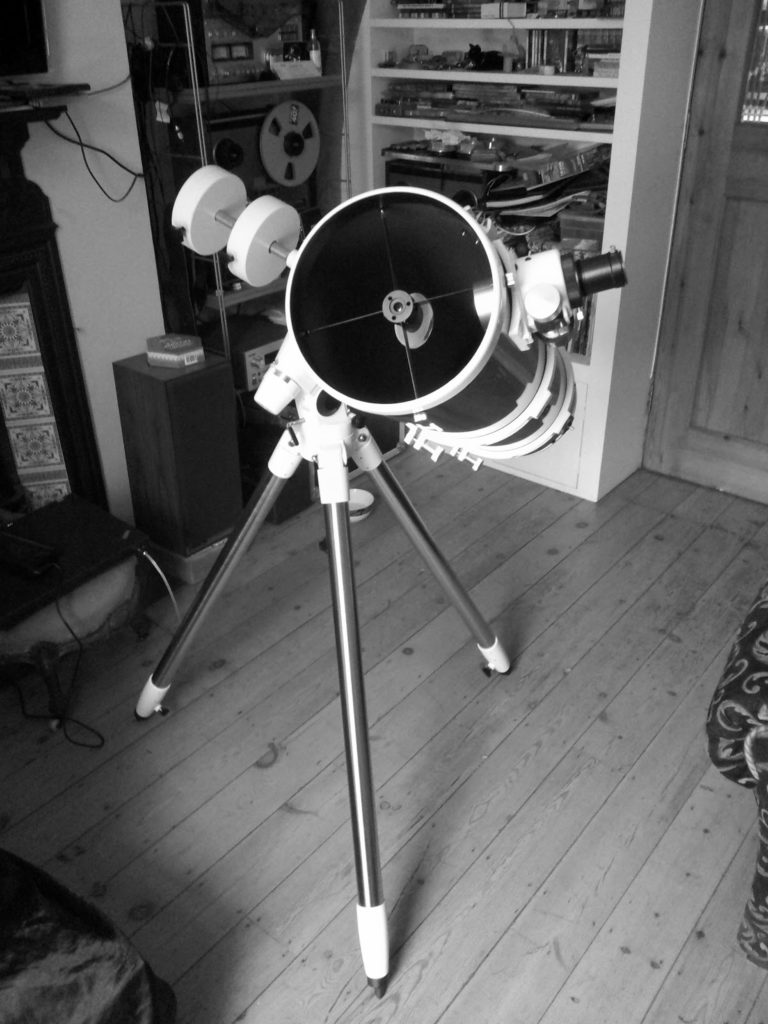
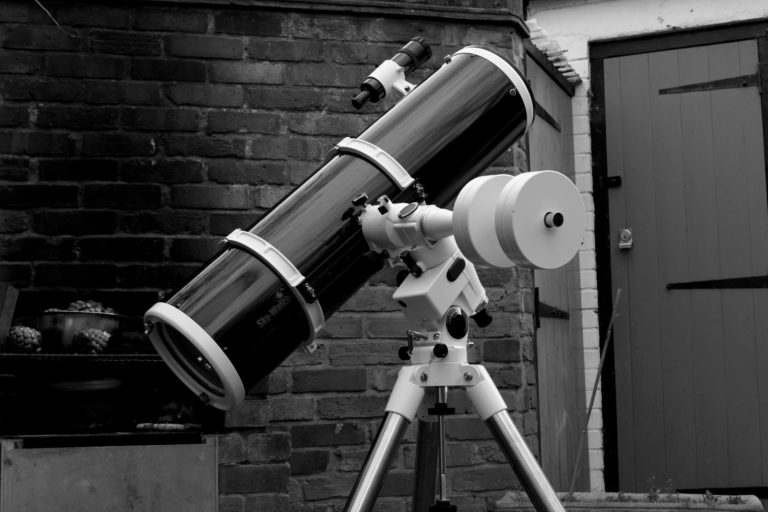
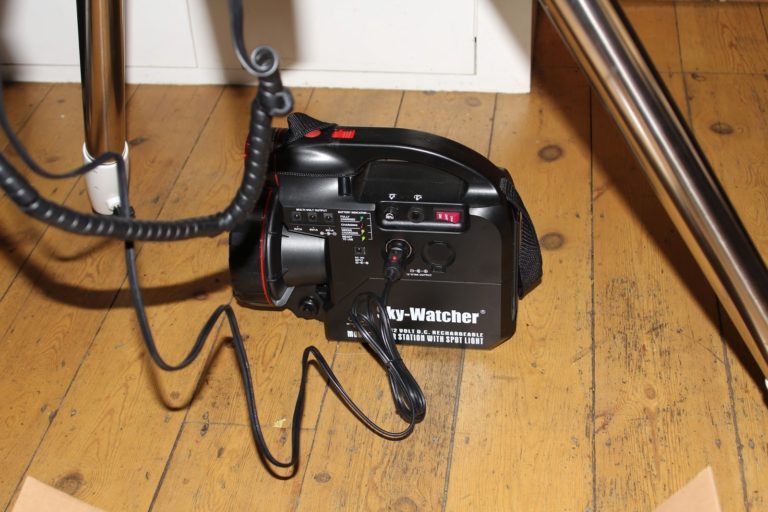
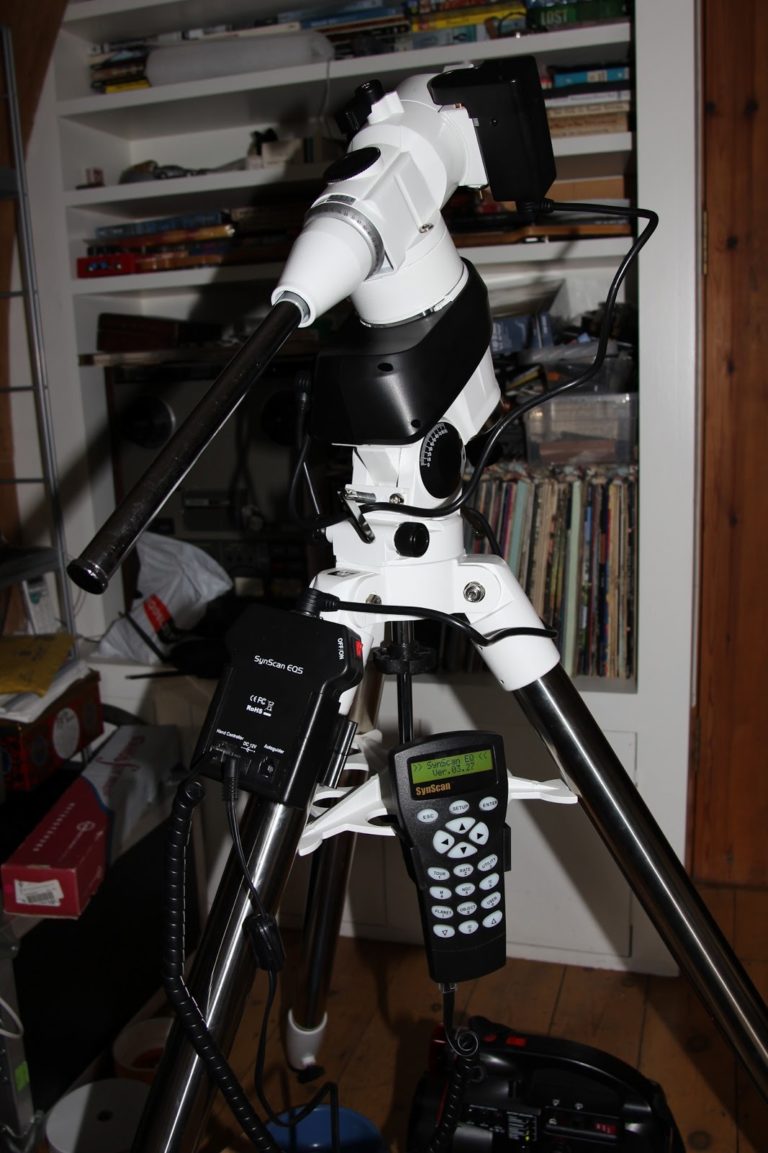
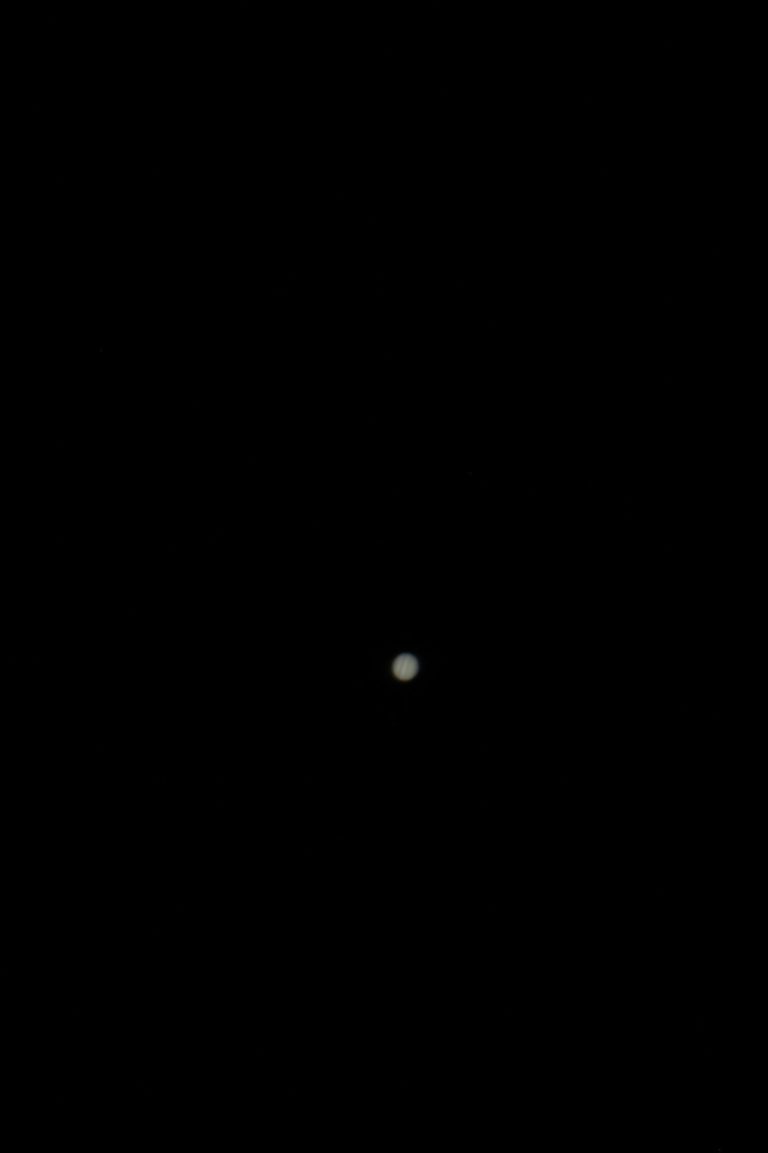
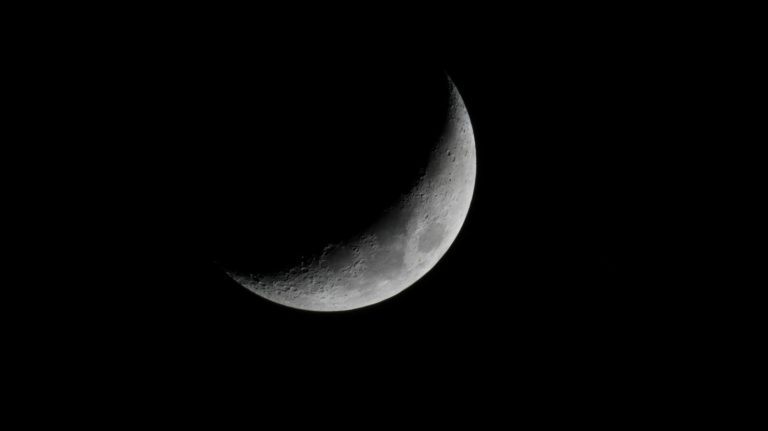
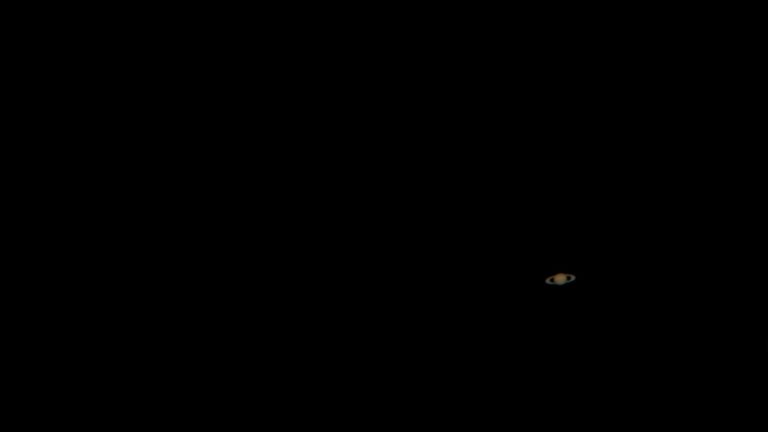
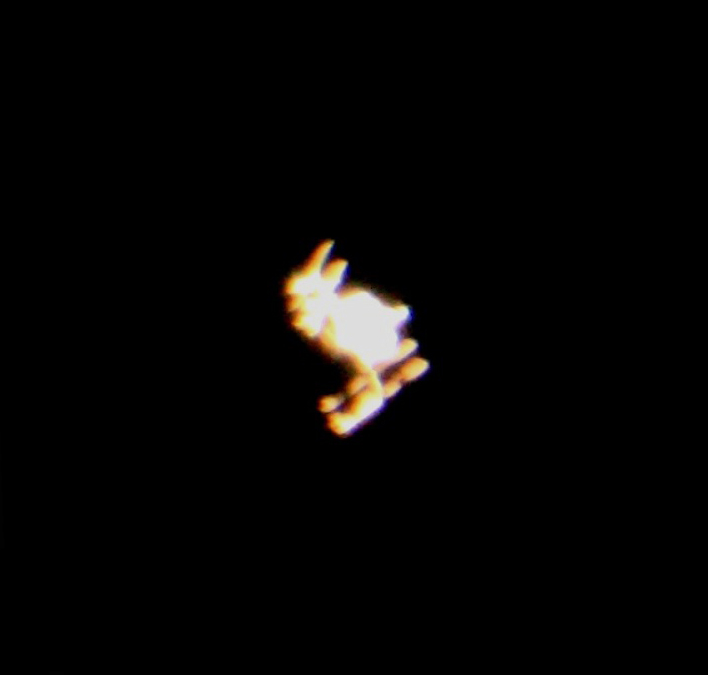
I think most of us have very little idea what to do with a new scope. What I mean is some will become a visual observer only, maybe an astrophotographer. Some draw our Moon or planets, others taking photos of comets. Lots of possibilities ahead and it takes some time to find our way, what our interest is that we enjoy the most. Soon I realised it is our solar system and the International Space Station (ISS) for me. Sadly the space station is a hugely under appreciated human achievement by the general public in most of the countries. I still found fascinating to try taking photos of it.
As time progressed I found myself purposefully heading to a certain direction equipment-wise. An equatorial mount is just not the right tool for high magnification manual International Space Station imaging as it requires you to bend and lean back and forth in such twisted way …. plus you need to turn around the whole scope once ISS is getting very close to zenith – meaning that you lose out the best possible frames of a flyby when the station is at closest to your location. It became clear that a dobson telescope might just be the right tool for me. After using equatorial and alt-az mounts on tripods finally I made my move and invested into a Skywatcher 250/1200 (10″) Flextube dobson telescope. It is easy to use, still quite easy to handle and has a big enough mirror to give my photos good enough resolution.
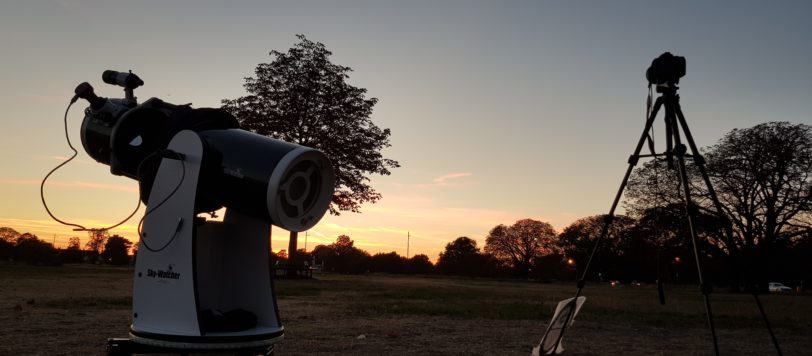
Most of my better photos in the gallery were taken with the dobson telescope. But I must admit at this point that a small telescope might be just as useful if we thoroughly know how to use it. One of my most interesting shots were taken with a 90/1250! maksutov telescope. When Tim Peake spent 6 months in space they had some issue with the power distribution system, so basically one half pair of the solar arrays were not tracking the Sun properly – meaning that they were misaligned. He was about to do a spacewalk with Tim Copra to fix the issue, but luckily I could take this shot before that.
There are some great ISS photographers out there, but a few years ago when I started taking photos really could not find much information about the know-how. The telescope is only one part of the story, we require an imaging equipment as well.
In the beginning I used my Canon 600D camera for taking images. I have tried both raw imaging and taking digitally cropped videos at 25fps and both were good ways of doing it. What matters the most in both methods are the correct camera settings. I learned very quickly that the shutter speed must be set to a very short value. ISS is a bright object and if we want to capture details of the station this is the way forward. But the short exposure needs some kind of compensation so ISO has to be at least at a value of 800.
The next step was the introduction of a planetary camera. It was a game changer and I mean it!!! The sensitivity is just superior over any dslr camera and we get very high frame rate too. Previously I used ASI120MC and ASI120MM cameras and currently using an ASI224MC. In terms of frame rate now I get 60fps over 25fps with Canon. I must admit here that the new mirrorless cameras these days might have higher frame rate video capability, sadly I have no experience with mirrorless cameras yet. More info about imaging ISS below…
Planetary imaging is my other interest within astrophotography. Year 2018 sadly was not about planets from UK, their extremely low position in the night sky makes imaging really hard. Hopefully the next few years will be more promising. Luckily our celestial neighbour the Moon is always around, giving plenty of opportunities for lunar imaging and visual observation what I utterly like doing these days. Since I have my 10″ Flextube dobson telescope and an equatorial platform I am rediscovering the Moon. At calm atmospheric conditions at 150x magnification the lunar surface is just unreal! The clarity and the contrast of the lunar terrain simply blows my mind every single time, even tiny details become sharp and vividly clear the way I have never imagined before.
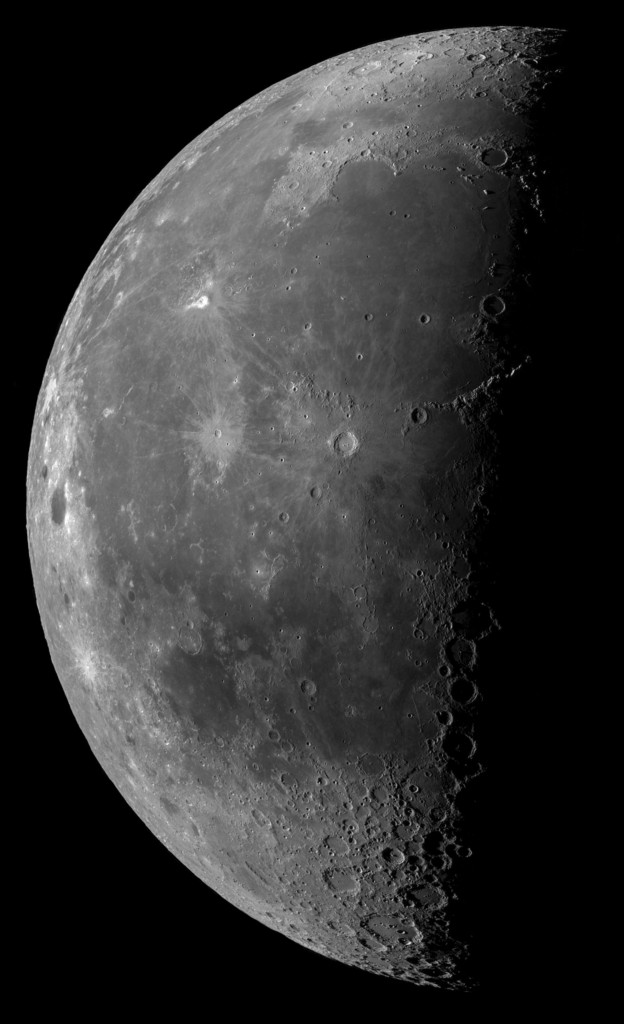
Equipment
In this video I talk about all the equipment I am using for International Space Station, spacecraft, lunar and planetary imaging.
IMAGING TECHNIQUE
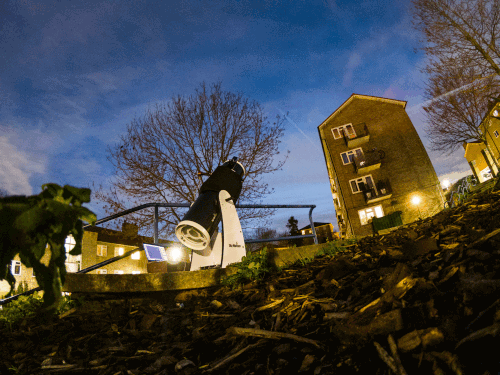
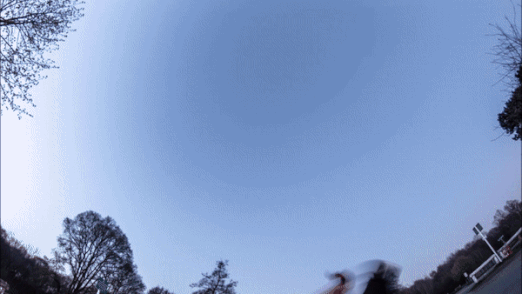
More and more people (gladly) are showing a growing interest toward ISS these days, probably because information about the overhead passes, transits are more accessible than ever before. And let’s be honest, who wouldn’t be interested in a spacecraft that us humans built, travelling 27,800 km/h, orbiting Earth at 400 km altitude 16 times a day.
When I first bought a scope for myself and became aware that there is this thing called ISS, I immediately thought to try to take an image of it. Than I’ve seen some of the best ISS photos on the web and I was immediately hooked. I wanted to do the same.
The only way this could be done for beginners is manually moving the scope and hoping to capture a few useful frames.
Before you do anything outdoors, check what’s happening, find details to know brightness, elevation, duration, etc. at Guide to find ISS.
I normally get a pretty good summary of information from www.heavens-above.com. Here is a screenshot from the website about the ISS pass I have recorded.
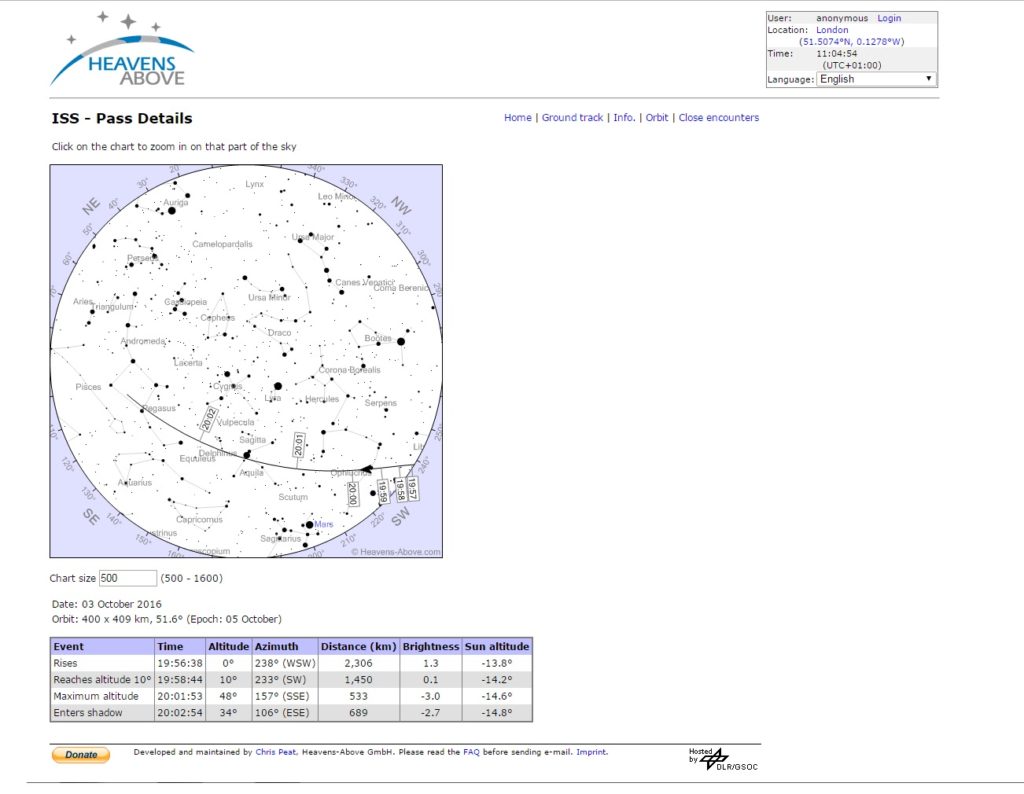
What would I recommend to anyone who finds ISS imaging attractive and a good enough challenge? Well after all the equipment I have used and tested, unless you own a mount that is capable of tracking ISS, this is what I would recommend:
– any dobsonian telescope (dobson base makes manual tracking indescribably easier)
– Telrad which is a certain type of red dot finder
– a planetary camera (ASI, QHY or any good quality camera which is capable of recording at high frame rate, ideally usb 3.0, but usb 2.0 is fine too)
– Bathinov mask for as accurate sharpness as possible (I did not use one for a long time and just realised lately how beneficial it can be )
First and probably most important step is to align my reddot finder/Telrad/finder (whichever you have) scope dead accurate with the main scope. In my case it means wherever I am pointing my Telrad, my main scope will have the same object centered in the eyepiece-camera/dslr screen. This is an extremely important step, because due relatively high magnification a small error will result in not having ISS in your camera’s field of view at all. Therefore all goes to bin….
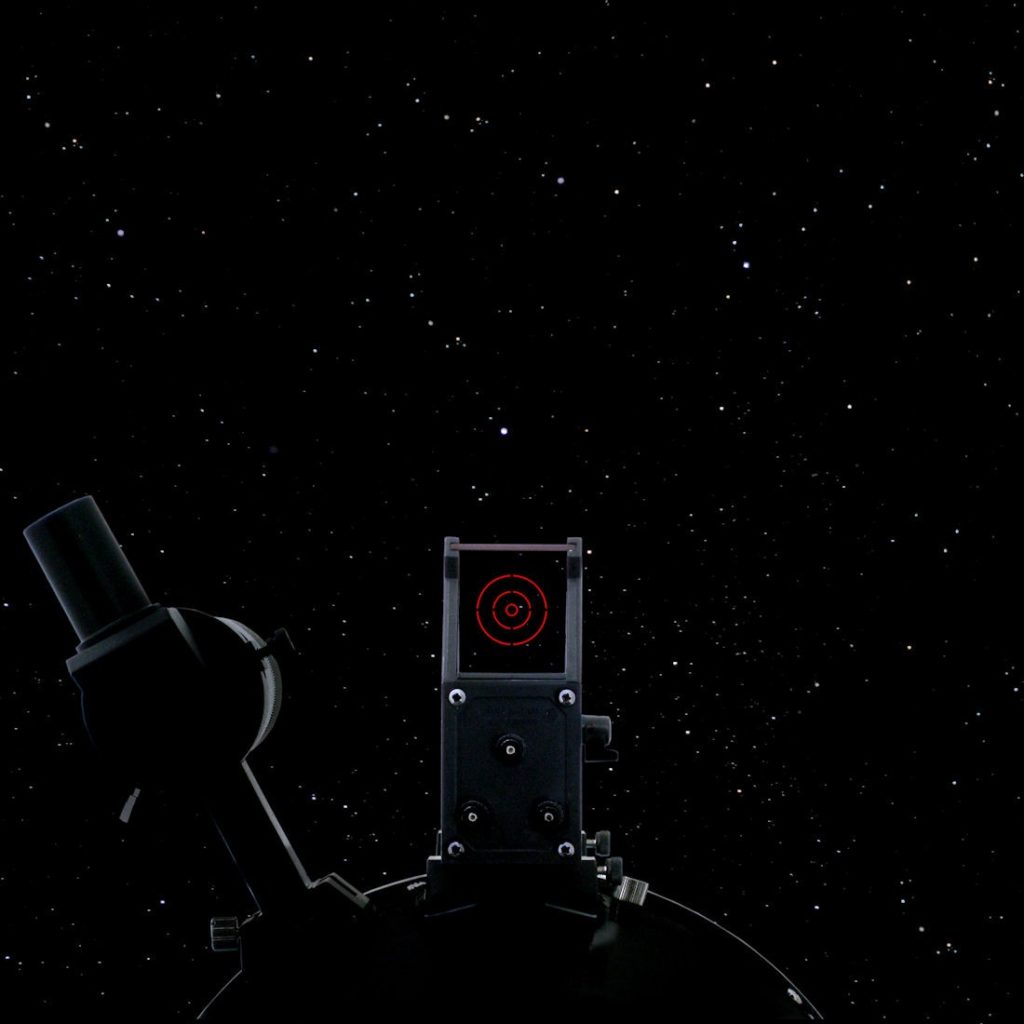
I made this mistake a few times and was frustrating a lot. But hey, mistakes are to learn from them right!
Once finder is aligned to scope, the second important thing is camera settings. I can not give you any exact advises on that, every planetary camera/dslr has its own sensitivity, therefore you have to find it out for yourself. Yes it means experimenting with your equipment during flybys, using different expo/ISO values. It is a painful procedure, but once you find the correct values, you only need to apply them What I can give you is my experience at equipment I have used in the past.
Two ways of doing imaging. Let’s assume we are setting up for a very bright flyby (between mag -2.5 and mag -3.5)
– Using a dslr camera. Depending on the dslr you’re using, you can record video or take raw/jpeg photos on continuous mode. Usually for photos the settings I’ve used at very bright passes was shutter at 1/1250 and ISO at either 800 or 1600 (equipment 90/1250 maksutov + Canon 600D)
– Using a planetary camera. I personally use a Zwo ASI 120MC, settings usually and the settings on this particular attempt at mag -3.0 was: Shutter 0.800 and Gain 60 ( equipment 127/1500 maksutov + Zwo ASI 120MC color camera).
(Update: My ASI120MC color camera is sold, instead I use a 224MC colour version. But you will find images also taken with an ASI120MM mono camera as well – also sold since. The first shots are at the bottom of the post, taken through hazy sky.
The rest of the job is determination, enthusiasm and a never giving up attitude. I used to use an equatorial mount for manually tracking ISS, but my experience is not the best with it. An Alt-Az mount or a dobson scope is probably the best for this purpose.
A few time lapse videos about me doing ISS imaging:
Sometimes I receive comments on social media channels (find them at the bottom of pages) like “nice CGI” or “green screen, fake” etc. Well I can not document the events any better than this, if someone chooses not to accept that Earth is a globe (not flat) and man-made objects actually orbiting around it, I can not really argue any longer….
Contact
Email: metrolinaszabi@gmail.com
Support me on my Patreon website.

